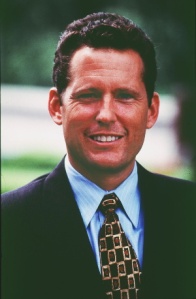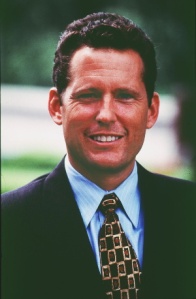Archive
ARPUs up for most CDMA2000 carriers; UMB needs push
 This blog is a part two of my conversation with CDMA Development Group’s (CDG) Executive Director, Perry LaForge.
This blog is a part two of my conversation with CDMA Development Group’s (CDG) Executive Director, Perry LaForge.
With China Telecom now pushing CDMA in China, CDG views this initiative, as a tremendous opportunity for CDMA in China. It has been working closely with China Telecom, a CDG member, as the carrier transitions China Unicom’s CDMA assets.
LaForge says: “Having China’s largest wireline operator focused on expanding CDMA2000 services and bundling them within their telecommunications portfolio will only increase their opportunities for success. We also look forward to seeing China Telecom introduce into China a large variety of new mobile broadband services enabled by Rev. A.”
Let us now look at global operators and how they have attempted to crack the ARPU (average revenue per user) challenge.
According to LarForge, looking at recently-announced Q2 numbers, ARPUs are up across the board for most leading CDMA2000 operators and a lot of what is driving that is wireless data ARPU.
* In the US, Verizon Wireless and Sprint Nextel have announced increased wireless data ARPUs in Q2 2008. Verizon’s total data ARPU is up to $12.58, representing 24.41 percent of their total ARPU and a CAGR of 31.3 percent. The ARPU generated by Sprint’s CDMA2000 subscribers has increased by 21 percent year-over-year to $14, representing 21.43 percent of their total ARPU.
* In Japan, KDDI continues to see wireless data ARPUs exceeding $20. LG Telecom increased its ARPU by 18 percent since launching Rev. A.
* In Europe and Russia, CDMA450 operators are seeing ARPUs well above $50. For example, Telefonica 02’s non-SMS data ARPU now accounts for 43 percent of its total ARPU in the Czech Republic.
Since launching EV-DO, Skylink’s profits from high-speed broadband data services in Russia have increased from 7 percent to 35 percent. In Norway, Rev. A is helping Nordisk Mobiltelefon get a 100 percent return on their investment in less than two years with only 100,000 subscribers.
* In Latin America, Centennial’s ARPU from its Rev. A network in Puerto Rico is one of the highest in this market reaching $65 in a marketplace where the average for its competitors is somewhere in the $50s.
Data revenue is a key driver in delivering Centennial’s competitive edge, currently accounting for approximately $7.50 per user on a monthly basis, and growing.
* In Africa, Starcomm’s Rev. A subscribers in Nigeria generate in excess of $80 ARPU, which is more than three times higher than $24.25, which is the combined revenue they generate from voice and data from its average subscribers.
Clearly, technologies such as EV-DO Rev. A and HSPA are helping operators realize the expectations of 3G, which includes increased ARPUs from wireless data. CDMA2000 has cracked the ARPU challenge, for now, and is meeting the industry’s expectations for 3G.
Finally, what’s the status with UMB (ultra mobile broadband). Are the operators ready to embrace this technology?
As of now, no operators have made a commitment to UMB, yet.
LaForge says that LTE has garnered the most outspoken support when it comes to OFDMA-based mobile broadband technologies. The CDG is committed to assisting all of its members as they seek to complement their 3G CDMA assets through interoperability with LTE, Mobile WiMAX or UMB.
CDG sees great opportunity for CDMA in India
Some time early this month, a very interesting development took place in Korea’s telecom market. The CDMA Development Group (CDG) reported that LG Telecom’s new CDMA2000 1x EV-DO Revision A (Rev. A) data service is flourishing in the Korean wireless services market, adding about 100,000 new data subscribers per month to its 3G data service, “OZ” (“Open Zone”).
The OZ service has already resulted in a 14 percent increase in data average revenue per user (ARPU) from the previous quarter and a total of 287,000 OZ subscribers at the end of July.
Launched in April 2008, OZ gained market momentum by offering Korean consumers full-featured handsets with the compelling benefits of wireless broadband data services. The OZ service includes full browsing on the open Internet and unlimited fast data downloads, all at a flat-rate price. LG Telecom will expand its OZ service offering with 10 or more OZ-capable mobile handsets before the year end.
 I caught up with Perry LaForge, executive director of the CDG, to find out a bit about the success of Rev A, and a little bit more about the global CDMA scenario, ARPUs, and his views on India, invariably!
I caught up with Perry LaForge, executive director of the CDG, to find out a bit about the success of Rev A, and a little bit more about the global CDMA scenario, ARPUs, and his views on India, invariably!
Giving his overview of the global CDMA market, he said that globally, CDMA is growing rapidly and the ecosystem is strong. We’re in the process of updating our numbers, but at the end of Q2 there were over 451 million CDMA subscribers worldwide, including 438 million CDMA2000 subscribers.
The EV-DO subscriber base grew from 65 million to 91 million over the past year, achieving a CAGR of 40 percent. Since the beginning of 2007, the number of commercial EV-DO Rev. A networks has also grown from three to 43, with another 35 being deployed.
CDMA continues to be the dominant technology in North America, while subscribership is growing fastest in Asian countries such as India and Indonesia. Additionally, the recently-restructured Chinese telecommunications sector has created a tremendous opportunity for CDMA with China Telecom.
Let’s see what kind of services does Rev. A bring to Korea and globally. LaForge added: “LG Telecom launched its flat-rate “OZ” mobile broadband service, which is enabled by Rev. A and has been immensely popular, bringing in more than 100,000 subscribers per month since April 2008.
“The connectivity enabled by Rev. A is opening up a whole new level of wireless services to operators around the world, including user-generated content/social networking, broadcast TV/multicasting, mobile commerce, push-to-X, mobile advertising, mobile commerce, enterprise productivity applications and public safety initiatives.”
So, how does the CDG foresee CDMA’s growth in India?
Certainly, CDG sees an incredible opportunity for CDMA growth in India, especially when mobile broadband EV-DO services become widely available. Commenting on the new 3G spectrum policy, LaForge said it allows CDMA operators to gain access to 2×1.25MHz 3G spectrum in the 800MHz frequency band is a welcome first step towards that goal.
He added: “We welcome the DoT’s announcement of the spectrum guidelines for 3G services and congratulate the DoT for opening up the IMT-2000 recognized bands of 450MHz and 1900MHz bands for 3G services, in addition to the 2100MHz band.
“Although no spectrum is currently available in the 450MHz and 1900MHz bands, we trust that they will soon be made available for bidding to maintain a level playing field with GSM operators.
“Just as the competitive forces of CDMA2000 1X stimulated the rapid growth of telephony penetration in India, we expect EV-DO will add the necessary impetus to take the growth of Internet penetration in the country to the next level.
“The CDG agrees with the recommended principles of using spectrum efficiently, ensuring technology and service neutrality, and establishing a level playing field through auctioning with a reserve price for allocation of 3G spectrum.”
Part two follows in the next blog.